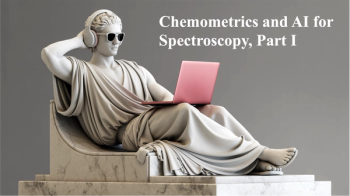
Overcoming OES Limitations with New Methodology to Determine Parameters of an Atmospheric Pressure Plasma Jet
Researchers say the developed methodology, which reconciles the different intensities of neutral and singly-ionized argon species, may be further refined and applied to optical emission spectroscopy (OES) of other rare gas plasma.
A new study in the journal Spectrochimica Acta Part B: Atomic Spectroscopy measures the optimization potential of the increasingly popular atmospheric pressure plasma jet (APPJ) by using optical emission spectroscopy (OES) to determine certain parameters such as plasma temperature (Te) and electron number density (Ne) (1). The authors said OES has the capability to analyze up to 17 emission lines of neutral and singly-ionized argon species, respectively Ar (I) and Ar (II)—as APPJs function by running an electric discharge under argon gas flow—but stark differences in the intensities between Ar (I) and Ar (II) expose some fundamental limitations to this mode of spectroscopy, which a methodology newly developed in this study aims to resolve.
The researchers, hailing mainly from the Institute of Applied Physics at Johannes Kepler University in Linz, Austria, said APPJs have attracted interest mainly in the last decade in various fields of study, from coating applications to biomedical uses to surface technology including cleaning and surface modification (1). Their ease of use and ability to be deployed in ambient air make APPJs particularly well-suited to industrial use, in the authors’ opinion, but to fully understand these devices’ capabilities, plasma characteristics must be measured. Such characteristics encompass not only Te and Ne, but also adjustable properties such as the electric power of the plasma generator, gas flow, and distance from the exit via the jet nozzle.
Optical emission spectroscopy (OES) is recognized as a useful tool in plasma characterization because it is non-invasive and is able to identify species by their distinct spectral signatures, but can be limited by relatively low intensities of ionic emission lines. Accordingly, further explaining the distinction between Ar (I) and Ar (II), the researchers said that Ar (I) lines, which are described as very intense, are well separated, spectrally speaking, from the very weak Ar (II) lines (1).
To attempt to remedy this, the methodology devised for this study used spectral bandpass filters for collection and to amplify the Ar (II) signal-to-noise (S/N) and signal-to-background (S/B) ratios—additionally allowing for accurate calculation of Te in the APPJ plasma using a Saha-Boltzmann plot (SBP). SBP increases the accuracy of a Boltzmann plot (BP), which has been used in previous studies with OES to determine temperatures of electric discharge and laser-induced plasma. For measurements in the few kW power regime as desired here, the research team opted for SBP analysis instead of BP.
Results garnered in this experiment were described by the researchers as consistent and accurate (1). Typical values of Te were 9000±150K, and Ne measured 5×1015 cm-3. This, the authors said, was in contrast to the inaccuracies and inconsistencies present in plasma characterization using only Ar (I) lines instead of both Ar (I) and Ar (II). In closing, the researchers expressed hope that their study would influence OES of other gas plasma using their novel methodology.
Reference
(1) Giannakaris, N.; Gürtler, G.; Stehrer, T.; Mair, M.; Pedarnig, J.D. Optical emission spectroscopy of an industrial thermal atmospheric pressure plasma jet: Parametric study of electron temperature. Spectrochim. Acta, Part B 2023, 207, 106736. DOI:
Newsletter
Get essential updates on the latest spectroscopy technologies, regulatory standards, and best practices—subscribe today to Spectroscopy.




